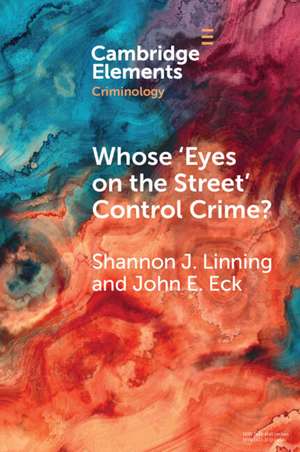Whose 'Eyes on the Street' Control Crime?: Expanding Place Management into Neighborhoods: Elements in Criminology
Autor Shannon J. Linning, John E. Ecken Limba Engleză Paperback – dec 2021
Preț: 143.38 lei
Nou
Puncte Express: 215
Preț estimativ în valută:
27.43€ • 28.65$ • 22.66£
27.43€ • 28.65$ • 22.66£
Carte tipărită la comandă
Livrare economică 15-29 aprilie
Preluare comenzi: 021 569.72.76
Specificații
ISBN-13: 9781108949330
ISBN-10: 1108949339
Pagini: 75
Dimensiuni: 152 x 228 x 6 mm
Greutate: 0.13 kg
Ediția:Nouă
Editura: Cambridge University Press
Colecția Cambridge University Press
Seria Elements in Criminology
Locul publicării:Cambridge, United Kingdom
ISBN-10: 1108949339
Pagini: 75
Dimensiuni: 152 x 228 x 6 mm
Greutate: 0.13 kg
Ediția:Nouă
Editura: Cambridge University Press
Colecția Cambridge University Press
Seria Elements in Criminology
Locul publicării:Cambridge, United Kingdom
Cuprins
1. Trouble Seeing: The Community, Place, and Crime Problem; 2. Whose Eyes? Bringing Jane Jacobs Back into Focus; 3. What Frames? The Deliberate Action of Outsiders; 4. Transition Lenses: Building Up from the Place; 5. New Glasses: The Neo-Jacobian Perspective; 6. Conclusion.
Descriere
This Element demonstrates the need for criminology to integrate further into economics, political science, urban planning, and history.









